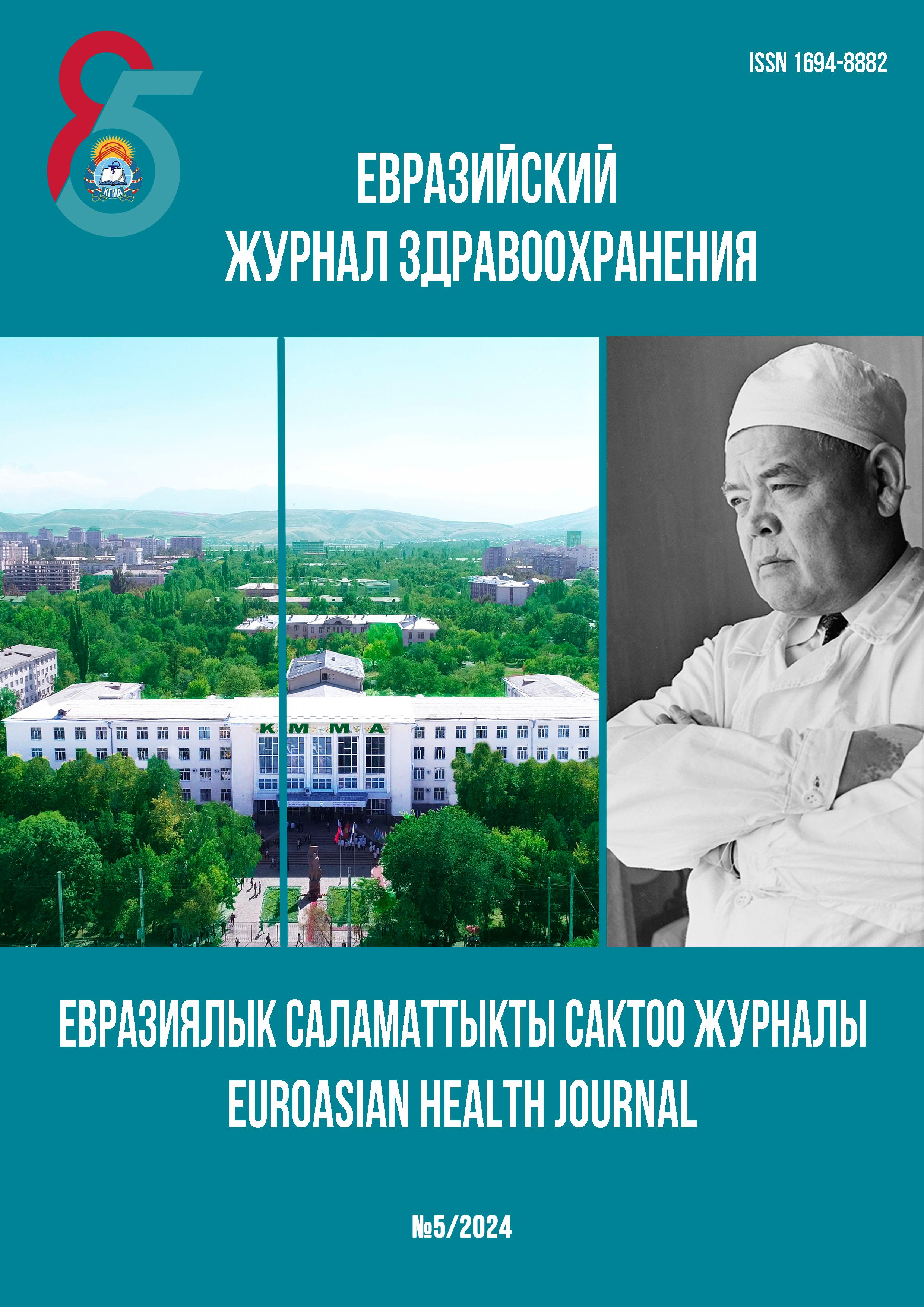ANALYSIS OF THE RESULTS OF SURGICAL TREATMENT OF PATIENTS WITH LUMBAR DISC HERNIATION
DOI:
https://doi.org/10.54890/1694-8882-2024-5-154Abstract
From 2021 to 2024, the Department of Orthopedics at the Kyrgyz Research Institute of Balneology and Rehabilitation performed surgical treatment on 120 patients with degenerative diseases of the lumbar spine. Postoperatively, 42.6% of patients experienced complete pain relief, with the achieved effect persisting in the long-term follow-up. Significantly severe pain persisted in 3.3% of patients. The study showed that modern surgical methods, including anterior spondylodesis and microdiscectomy, improve substantially treatment outcomes compared to traditional methods. Early rehabilitation using individual programs facilitates rapid patient recovery. The introduction of anterior stabilizing implants made from porous nickel-titanium significantly improved spinal stability and reduced recurrence risk. A comprehensive approach, including surgical intervention, medication therapy, and rehabilitation programs, has shown high effectiveness. Medical rehabilitation, utilizing therapeutic physical training and other physiotherapy methods, played a key role in strengthening muscles and reducing pain syndrome. However, the necessity for further research and improving treatment methods remains relevant for enhancing outcomes in complex cases.
Keywords:
Pain syndrome, anterior spondylodesis, microdiscectomyReferences
1. Джумабеков С.А., Сабыралиев М.К., Сулайманов Ж.Д., Мырзахат уулу Абас. Улучшение хирургической техники использования имплантов из пористого никелид титана при дегенеративных заболеваниях позвоночника. ЦАЖССХ. 2014;12:223-226.
2. Древаль О.Н., Саблин И.М., Горлов Н.И. Краткий анализ хирургического лечения диско-генных радикулитов. Актуальные вопросы медицинской нейрореабилитации: Конф. М.; 1996:97-98.
3. Fiume D, Sherkat S, Callovini GM, Parziale G, Gazzeri G. Treatment of the failed back surgery syndrome due to lumbo-sacral epidural fibrosis. Acta Neurochir Suppl. 1995;64:116-118. https://doi.org/10.1007/978-3-7091-9419-5_25
4. Wang YP, An JL, Sun YP, Ding WY, Shen Y, Zhang W. Comparison of outcomes between minimally invasive transforaminal lumbar interbody fusion and traditional posterior lumbar intervertebral fusion in obese patients with lumbar disk prolapse. Ther Clin Risk Manag. 2017;13:87-94. Published 2017 Jan 19. https://doi.org/10.2147/TCRM.S117063
5. Sengupta DK, Herkowitz HN. Lumbar spinal stenosis: treatment strategies and indications for surgery. Orthop Clin North Am. 2003;34(2):281-295.
6. Rajasekaran S, Bajaj N, Tubaki V, Kanna RM, Shetty AP. ISSLS Prize winner: The anatomy of failure in lumbar disc herniation: an in vivo, multimodal, prospective study of 181 subjects. Spine (Phila Pa 1976). 2013;38(17):1491-1500. https://doi.org/10.1097/BRS.0b013e31829a6fa6
7. Schroeder GD, Kepler CK, Kurd MF, et al. Comparative effectiveness of allograft versus autograft for lumbar interbody fusion: a metaanalysis of 5090 patients. World Neurosurg. 2015;83(3):444-453.
8. Lee JH, Lee JH, Park JW, Shin YH. Minimally invasive transforaminal lumbar interbody fusion in multilevel: comparison with conventional transforaminal lumbar interbody fusion. World Neurosurg. 2017;98:177-187.







